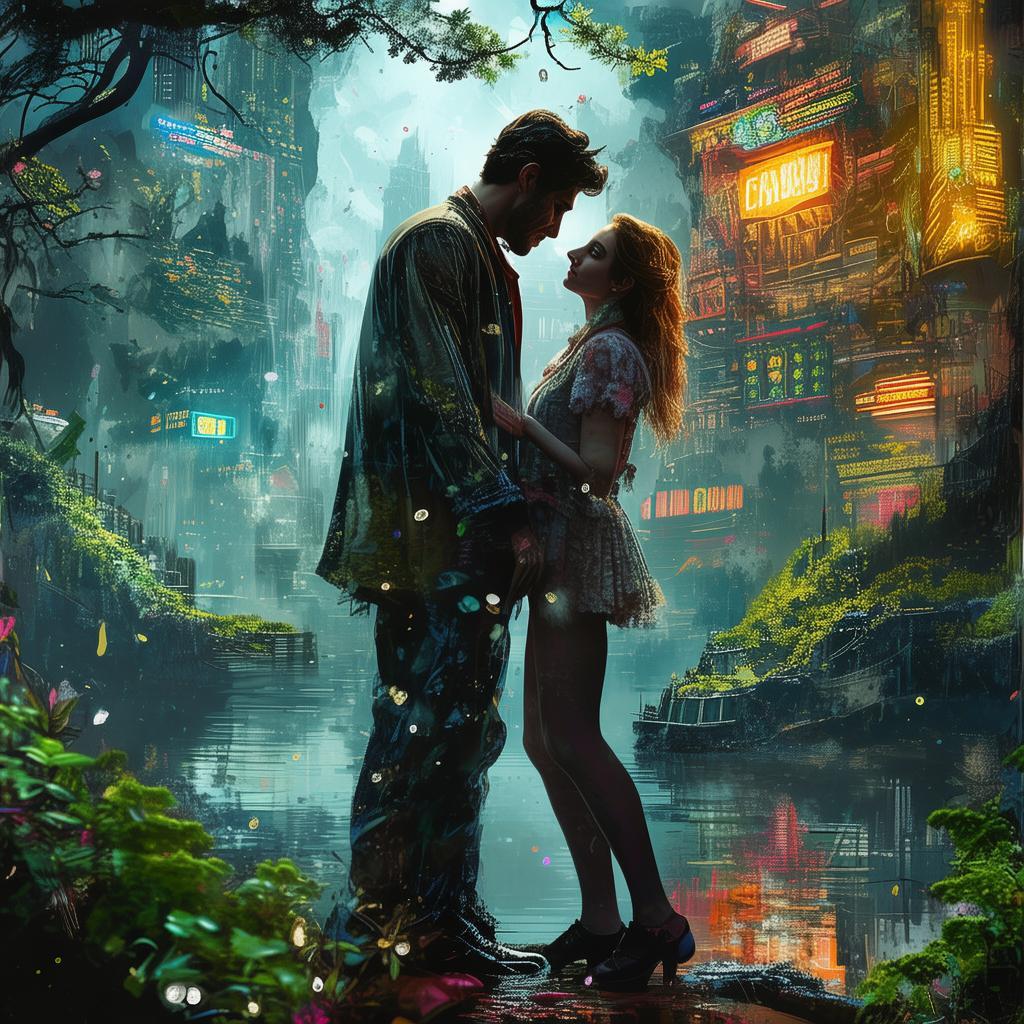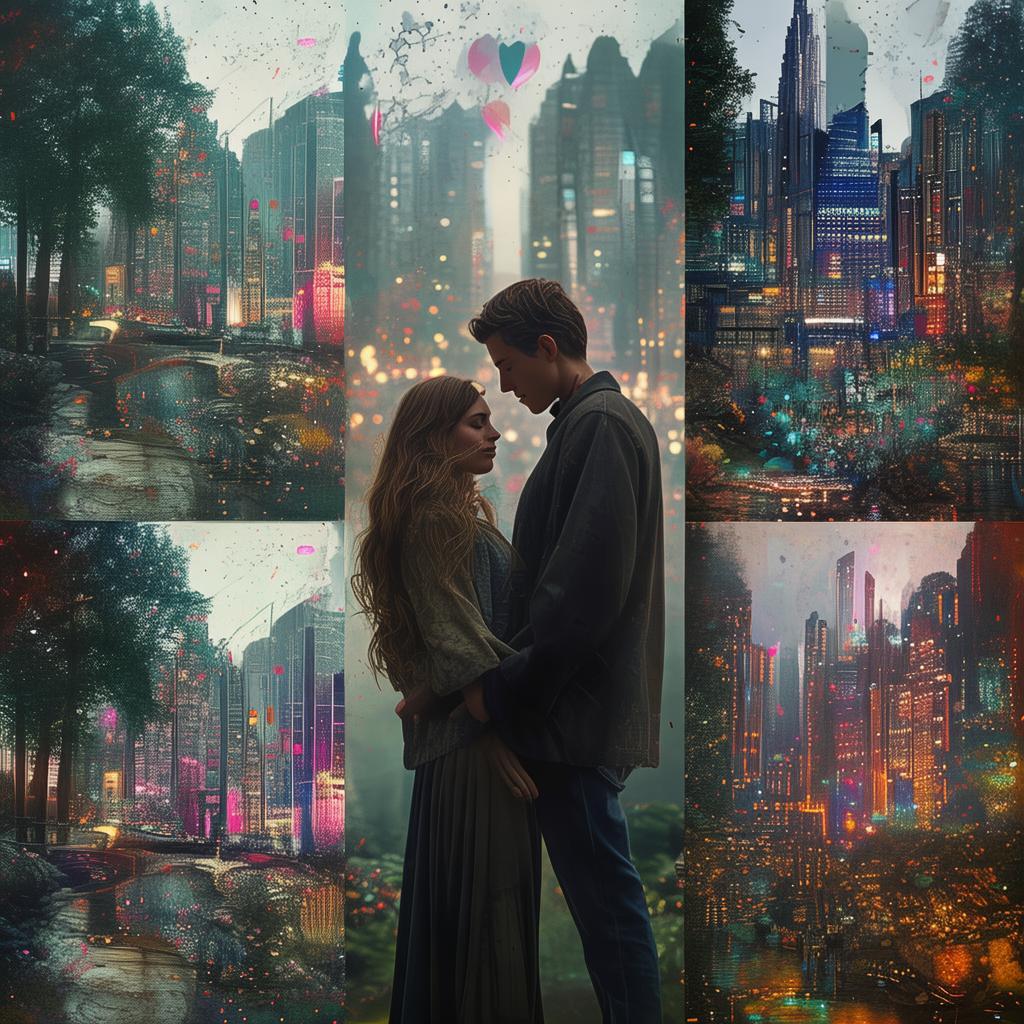The Canvas of Love in a Decade of Revolution
In the heart of Manhattan, during the heady days of the 1960s, a young woman named Eliza found herself standing in front of a gallery, her breath catching in her throat. The air was thick with the scent of ambition and the promise of something new. She had just finished her first exhibition, a collection of paintings that captured the essence of the city she called home. The canvas was her canvas, and the streets were her stage.
Eliza had been drawn to art from a young age, but it was her time in New York that ignited her passion for the avant-garde. The city was alive with the spirit of revolution, from the civil rights movement to the sexual liberation of the counterculture. It was a time when the boundaries of art and life were blurred, when the canvas was as much a reflection of the soul as it was a surface to paint upon.
One evening, as she wandered the streets, her eyes were drawn to a small, dimly lit café that seemed to hum with a different energy. She stepped inside, her heart pounding with anticipation. The place was filled with a motley crew of artists, musicians, and activists, all united by a common cause: the pursuit of a life that was truly their own.
In the corner of the café sat a man, his back to Eliza, his eyes closed as he painted. His strokes were fluid, his colors vivid, and his concentration was intense. Eliza felt a strange pull, as if he were a siren calling her to the depths of his creation. She approached the table, her hand hesitantly reaching out to tap his shoulder.
"Excuse me," she said, her voice barely above a whisper. The man opened his eyes, and Eliza was struck by the intensity of his gaze. He was handsome, with piercing blue eyes and a shock of white hair that seemed to capture the light of the room. His name was Max, and he was a living legend in the world of art.
"You're new here," he said, his voice deep and soothing. "I didn't even notice you come in."
"I'm Eliza," she replied, feeling a flush of embarrassment. "I... I just wanted to tell you that I loved your painting."
Max smiled, a slow, knowing grin that seemed to warm the room. "I appreciate the compliment. But I think it's time we introduced ourselves properly."
Thus began a relationship that would span the tumultuous decade of the 1960s. Eliza and Max were a perfect storm of creativity and controversy, their love as fiery as the revolution that was unfolding around them.
They spent their days in the studio, their nights in the café, and their evenings in the streets. They spoke of art, of love, of life, and of the world as they saw it. They were not just lovers, but partners in a grand experiment, each contributing to the other's evolution.
Eliza's paintings began to reflect the spirit of the times, the boldness and the beauty of the 1960s. Max's art became more expressive, more political, more passionate. They were a force to be reckoned with, their work sparking debates and discussions wherever it was shown.
Yet, as the years passed, the revolution began to wane. The energy of the 60s was fading, replaced by a new wave of conservatism. The world was changing, and with it, Eliza and Max's relationship.
Their art, once a beacon of hope, began to feel heavy with the weight of the past. Their conversations grew tense, their laughter sparse. The once vibrant couple found themselves adrift in a sea of doubt and uncertainty.
One evening, as they sat in their studio, surrounded by their work, Max turned to Eliza and said, "Eliza, I think it's time for us to move on. Our art has changed, and so have we."
Eliza's heart broke at the thought of losing Max, but she knew he was right. "I understand," she said, her voice steady despite the tears that blurred her vision. "We've grown, and so must our art."
They spent the next few days preparing to part ways. They packed their belongings, put their art up for sale, and said their goodbyes. It was a painful process, but one that was necessary for both of them to move forward.
In the end, Eliza and Max's love story was not a fairy tale with a happy ending. It was a testament to the fact that sometimes, the most beautiful things in life must come to an end. Their love may have faded, but their art, their legacy, lived on.

Years later, as Eliza looked back on that time, she realized that the 1960s had been a crucible for her and Max. It had been a time of intense creativity, of passionate relationships, and of the pursuit of a dream that was bigger than themselves.
She had painted the canvas of love in a decade of revolution, and while the brushstrokes may have been bold and intense, they were also delicate and fleeting. But in that fleeting moment, she had captured the essence of what it meant to be alive during that extraordinary time.
The 1960s had left an indelible mark on Eliza's life, and her love for Max was a testament to the power of love and art to transcend the ephemeral nature of time.
✨ Original Statement ✨
All articles published on this website (including but not limited to text, images, videos, and other content) are original or authorized for reposting and are protected by relevant laws. Without the explicit written permission of this website, no individual or organization may copy, modify, repost, or use the content for commercial purposes.
If you need to quote or cooperate, please contact this site for authorization. We reserve the right to pursue legal responsibility for any unauthorized use.
Hereby declared.









